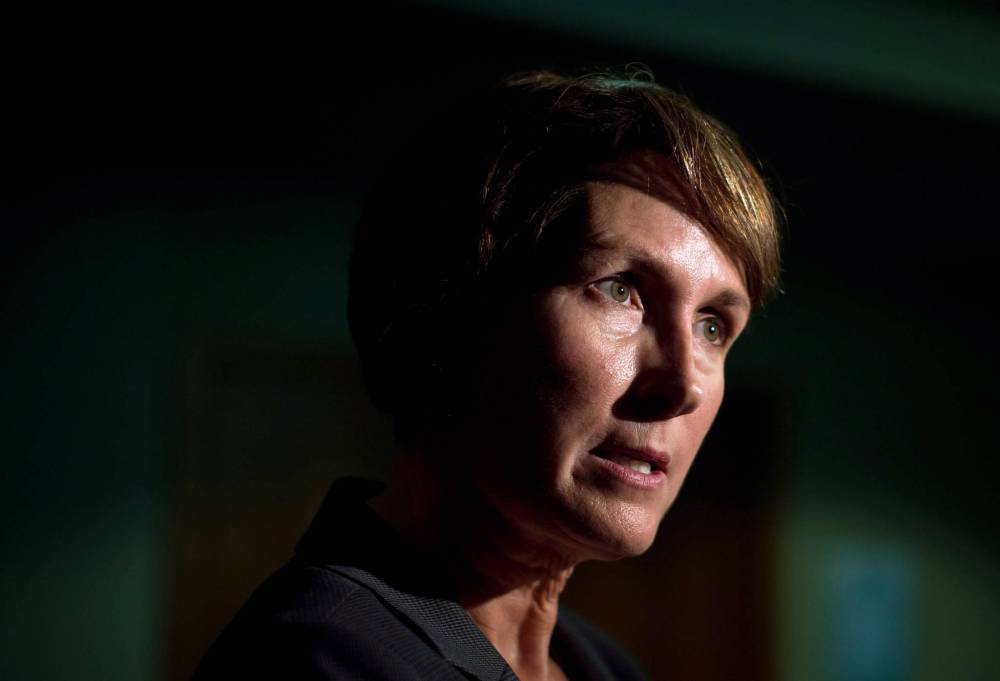A few years ago, I applied for a high-profile job in an important Indigenous organization.
After several stages, I made it to the final step — a meeting with a committee explaining my experience and relationships working with Indigenous communities.
I think I did well, and was told — privately — later by two committee members that I had. One whispered that I was the first choice of a majority on the committee.

DARRYL DYCK / THE CANADIAN PRESS FILES
Mary Ellen Turpel-Lafond is a former judge and academic who claimed to be from Norway House Cree Nation.
But, there was one member who thought I was unsuitable for the job. So, in a decision that came down to a razor-thin vote, I finished second.
I don’t know whether I deserved that job, but I also know that it would have changed my life and, perhaps, the lives of others, as well.
I would have left my teaching career to do completely different work, and would not have the opportunity to write this column.
My life was altered by a single opinion — that of committee member Mary Ellen Turpel-Lafond.
Turpel-Lafond is a former judge and academic who claimed to be from Norway House Cree Nation.
Turpel-Lafond was, for decades, highly regarded and widely quoted across the country. She was bestowed with 11 honorary degrees, a multitude of awards and high-profile appointments overseeing Indigenous communities.
She was appointed an Officer of the Order of Canada in 2021.
But in October 2022, a CBC investigation exposed inconsistencies in her claims of Indigenous identity as a treaty Indian born and raised in Norway House, one of her many falsehoods. Investigators discovered that she was born and grew up in Niagara Falls.
The investigation also suggested Turpel-Lafond misrepresented her academic credentials and experience, leading numerous institutions to rescind their awards and degrees and the Law Society of British Columbia to launch a probe.
In an agreed-upon statement issued last week, the legal profession’s regulator reprimanded and fined her $10,000 after she admitted to professional misconduct by making a series of false public claims about her history and her accomplishments.
The results of a DNA test, however, prevented a decision on her claim of Indigenous identity.
“The DNA test results indicated that genomic markers known to be disproportionately present in Indigenous populations were present in (Turpel-Lafond’s) DNA sequencing results,” the statement said, so “the individual whose DNA was analyzed most likely has very recent ancestors with substantial Indigenous DNA.”
A CBC interview with the scientist who reviewed the test said “substantial Indigenous DNA” probably means a single grandparent of Turpel-Lafond’s was a “full-blood” Indigenous person.
Turpel-Lafond, through her lawyer, claimed vindication, declaring the test results proof of her lineage, specifically that her father, William Turpel, is the child of an individual from Norway House.
“I am grateful to have this matter behind me. I was raised by a Cree father and Scottish mother,” she said in a statement.
The original media investigation found that her father’s birth certificate says he was born in Victoria. The fact her grandparents worked and lived in Norway House, along with the test results, raise the possibility that one of them could have had an extra-marital affair that produced William Turpel.
Or not.
It’s all a mystery, really; one she either doesn’t know enough details about, or simply refuses to fully explain.
But Turpel-Lafond’s claim of Indigeneity is far more complicated than that.
In the 1990s, she affiliated with Muskeg Lake Cree Nation, her then-husband’s community in Saskatchewan. Like many First Nations, Muskeg Lake controls membership in the community, including both status and non-status “Indians.”
Muskeg Lake Chief Kelly Wolfe has consistently defended Turpel-Lafond’s inclusion as a member.
“(MLCN) membership is decided by us, and not by the media, government or Indigenous peoples from outside our Nation,” Wolfe says in the B.C. law society report.
“Determining membership is an internal matter within our inherent right to self-government, recognized and confirmed by the Crown when we entered into Treaty 6 in 1876.”
That is true. One either believes in an Indigenous nation’s right to sovereignty or does not.
So, in the bounds and jurisdiction of Muskeg Lake, Turpel-Lafond is Cree and Indigenous.
But that doesn’t mean the rest of us have to accept that determination. A central principle of Indigenous identity is not who you claim, but who claims you.
Regardless of an externally imposed Indian Act that uses blood quantum to determine who is a “status” Indian — basically the same principle nation-states such as Canada use to determine citizenship — membership in Indigenous nations is based on earning the right to be from that community.
Ancestry offers only the opportunity to build relationships and become a citizen. It doesn’t define the relationships themselves.
Membership in Indigenous nations is claimed through the time, commitment and energy someone puts into building the communities they are a part of.
Misrepresenting, fabricating and harming the lives of other Indigenous peoples are all antithetical to that.
So, while some may see Turpel-Lafond as Indigenous, many others, like me, do not.
Both truths can operate at the same time.
niigaan.sinclair@freepress.mb.ca

Niigaan Sinclair
Columnist
Niigaan Sinclair is Anishinaabe and is a columnist at the Winnipeg Free Press.
Our newsroom depends on a growing audience of readers to power our journalism. If you are not a paid reader, please consider becoming a subscriber.
Our newsroom depends on its audience of readers to power our journalism. Thank you for your support.